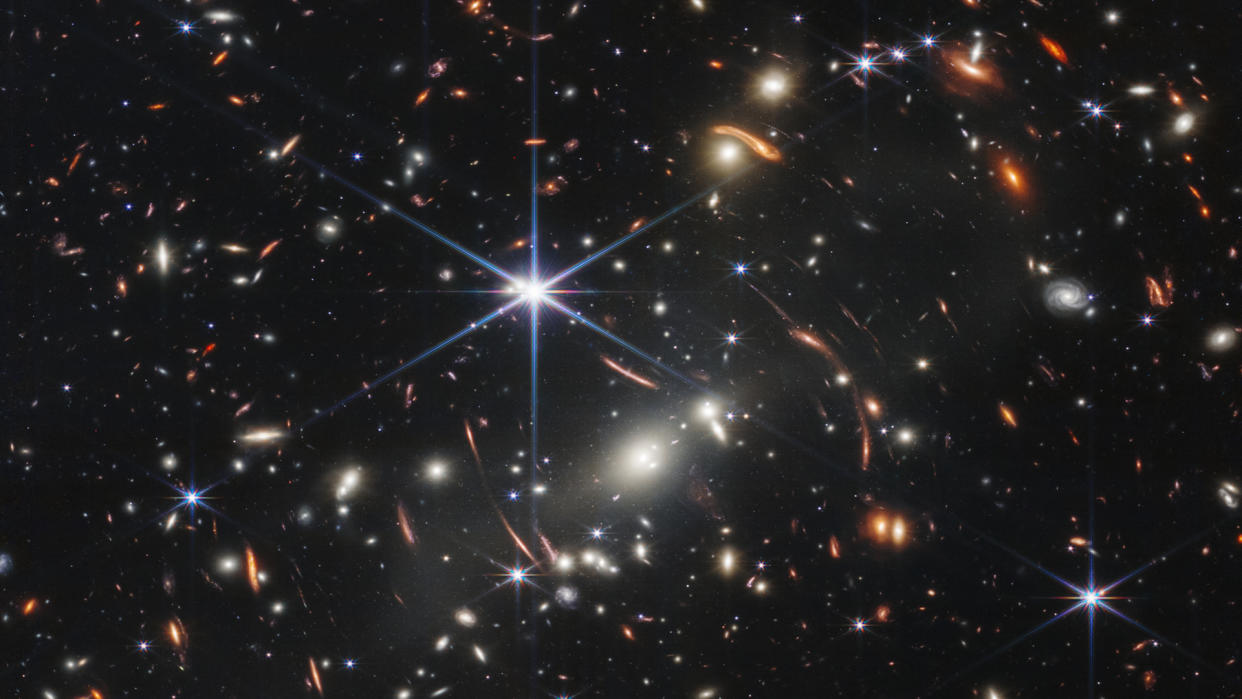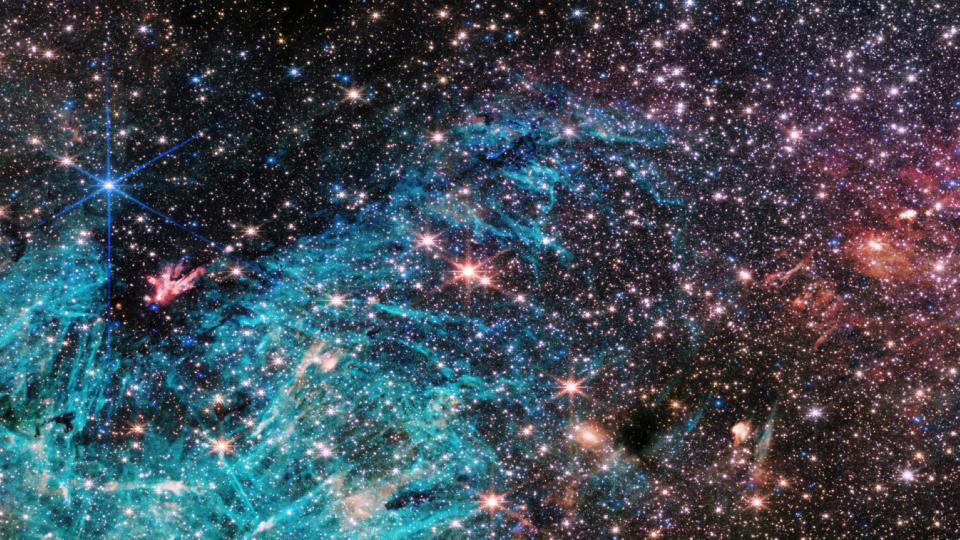What is the most distant thing we can see?

To the unaided human eye, the night sky is resplendent with over 9,000 individual points of light, but that perspective covers only a bare fraction of the universe.
The nearest visible star system is Alpha Centauri, which is about 4.25 light-years away. The closest star in this three-star system is Proxima Centauri, but because it's a red dwarf, it's too dim to be seen without a telescope.
The farthest star that's visible to the naked eye is V762 Cas, a variable star sitting a whopping 16,000 light-years away. Although it is likely 100,000 times more luminous than the sun, that incredible distance means it hovers right on the edge of typical human night vision in ideal conditions.
Related: Is there anything beyond the universe?
All of the stars we can see without a telescope are much more massive than the sun. Stars like the sun and smaller are too dim to overcome the light-years of distance between them and us, rendering them invisible. Without the volume contained by the distance to V762 Cas, there are about 9,000 visible stars — and over a million invisible ones.
But while V762 Cas is the most distant star we can see with the naked eye, it's not the farthest thing we can see without a telescope. That honor goes to the Andromeda galaxy. Containing upward of a trillion stars, it appears to us as a fuzzy patch about the size of an outstretched fist. When you look at Andromeda, you're receiving light that first began its journey over 2.5 million years ago.
Some flashes and explosions soar to incredible levels of brightness, making them temporarily visible even at extreme distances. For example, in 2008, the gamma-ray burst GRB 080319B was visible to the naked eye for about 30 seconds, despite going off over 7.5 billion light-years away. That means that when the light of this gamma-ray burst first began its journey, our solar system hadn't even formed yet.
When Galileo perfected the astronomical telescope in the early 1600s, the universe opened up before us. Telescopes allow us to see dimmer objects because they can collect more light and more distant objects because they also magnify images.
Still, even with our most advanced ground- and space-based telescopes and most comprehensive surveys, we have managed to map less than 3% of all the stars in the Milky Way galaxy and less than 1% of the galaxies in the observable universe. The most distant galaxies are still inaccessible to us; they are simply too dim and too small for us to detect.

But nature has given us a little trick that we can use to occasionally push farther into the cosmos. When light from a distant star or galaxy passes through a massive cluster, the gravity of that cluster can magnify the image — in some cases, by 10,000 times or more.
It's through this trick of gravitational lensing that astronomers could detect the most distant known single star, named Earendel (yes, that's a "Lord of the Rings" reference, which comes from the Anglo-Saxon myth of the Morning Star), which currently sits over 28 billion light-years away. That star arrived on the cosmic scene a mere 900 million years after the Big Bang, putting it within reach of the first generation of stars to appear in the universe.
Employing a similar gravitational lensing technique, astronomers used the James Webb Space Telescope to precisely measure the distance to JADES-GS-z13-0, the most distant known galaxy. It is currently found over 33.6 billion light-years away and formed when our universe was a mere 400 million years old.
Beyond that, we can still see cosmic objects, but to do, so we have to switch to other wavelengths of light. In the microwave, we are surrounded by the glow of the cosmic microwave background, whose light was generated when the universe was 380,000 years old and transitioned from a plasma to a neutral gas. That light has soaked the cosmos since then and sits nearly at the edge of the observable universe.
Related stories:
—When you look up, how far back in time do you see?
—How was the universe created?
—Best telescopes 2024: For stargazing galaxies, nebulas and more
Astronomers suspect there are other signals coming from even deeper in the past. For example, exotic processes in the earliest moments of the Big Bang generated a flood of ghostly particles known as neutrinos, and the hunt is on for this relic population. Even more exotic processes within the first second of the Big Bang likely swamped the cosmos in gravitational waves. Proposed missions like the Big Bang Observer might catch the faint traces of this leftover signal. If detected, it would be by far the most distant thing we could ever possibly see.

